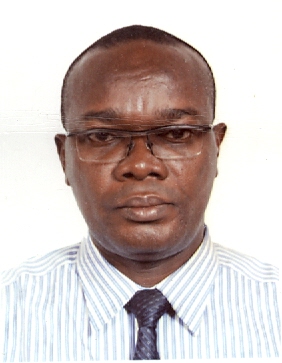The National Executive Director, Chartered Institute of Logistics and Transport (CILT), Nigeria, Mr. Paul Ndibe has said that in as much as he is not aware of any discussion for merger between the CILT and the Chartered Institute of Transport Administration of Nigeria (CiOTA), “discussions might be at the level of the two national presidents to agree and to present it to different councils for implementation.”
Ndibe who stated this in an interview with Primetime Reporters in Lagos on Thursday noted that there is hierarchy in every organization and there is also level of information control adding that at the level of National Executive Director, the information available to him would certainly be different from the level of information available to the National President of CILT.
“The much I will say is yes, we noted the information availed the public by the President of CiOTA and DG of NIMASA, Dr. Bashir Jamoh, as he put it, there was ongoing discussion between the CILT members and CiOTA members to merge. Well, the basis for that was not given. It could be that he has more detailed information and possibly, the president of the institute (CILT) will also have his own level of information.
“But looking at it from an observatory point, you see, the industry is wide and like Dr. Jamoh observed, CILT members are more in the industry and more widespread, maybe, on account of their long period of existence, training professionals and trying to improve the practices in the industry. That cannot be taken away from the CILT.
“Just like he observed, yes, many of their members could be people in the academia but it also did not change the concept. At any rate, those in the academia and who are professors, majority of them are also members of the institute. So, it does not necessarily change anything if the two organizations would merge because invariably, 90 percent or 95 percent of them are members of the Chartered Institute of Logistics and Transport. So, of what use will it be that you are a member of two organizations whereas membership of one will be sufficient to carry you.
“If the question is the Act and they merge for the purposes of the Act, then, they become one institute and then, the brand is there, the wider world network is there and the wider reach is there. Even the long period of history of growth and development will go with whoever it suits. So, in a nutshell, it is not a bad idea if they merge but it depends on what you are trading off in order to come together. So, I think the discussion might be at the level of the two national presidents to agree and to present it to different councils for implementation”, he said.
Ndibe however remarked that the industry is huge and that having two professional bodies for logistics and transport industry might not be adequate for the size of the economy and for the number of practitioners and professionals in the industry even as he pointed out that there are many more that could come up taking care of other variance of the industry.
In his words, “The industry is huge, so, the more you have professionals and practitioners that are following the ethics of the various organizations that may come up, the better. The important thing is to ensure that good professional services are being offered by these professionals. So, if they can do that by way of maybe, CILT and CiOTA coming together, fine. If they can do it individually by organizations name, fine. If they can do it by more organizations coming into play, it is also fine. The important thing is to ensure that the standards are well kept, the ethics are maintained and good professional services are being delivered.”
He went on to explain that “In any merger, there are things you should expect to gain. You are trying to pull the strengths of the two organizations in order to have that wanton leap. You are not merging to take their weaknesses, no, it is the strength in the two organizations that you pull together. So, if the international outlook is more with the CILT, if the brand is stronger with CILT, if international connections and network is more with the CILT, if membership number is more with the CILT, if international recognition and outlook is more with CILT, it is strength. Then, the Act establishing CiOTA is also strength for CiOTA. So, it is important that the two organizations look at their strengths and bring the strengths together and see which one will pay them more in terms of the gains they will have and also the level of impact that they create in the economy.
“As the world is going global and diversifying, one should look at what is acceptable across a wider horizon. If CILT has a wider recognition or membership in 40 countries, previously, it was in the Common Wealth countries but now they are going into Kazakhstan, Poland and it is even in the French speaking countries; Cote D’ Ivoire and the Cameroun and as globalization has allowed for these interventions to take place, it is better you look more global and you can only attain that through the CILT. “
The National President, Chartered Institute of Transport Administration of Nigeria (CiOTA) and Director General of the Nigerian Maritime Administration and Safety Agency (NIMASA), Dr. Bashir Jamoh recently in a chat with a news medium (not Primetime Reporters) hinted of an ongoing talks between the CiOTA and CILT leaderships on the possible merger of the two institutes in Nigeria for greater efficiency.
Photo: National Executive Director, CILT, Nigeria, Mr. Paul Ndibe.
Send your news, press releases/articles to augustinenwadinamuo@yahoo.com. Also, follow us on Twitter @ptreporters and on Facebook on facebook.com/primetimereporters or call the editor on 07030661526, 08053908817.

